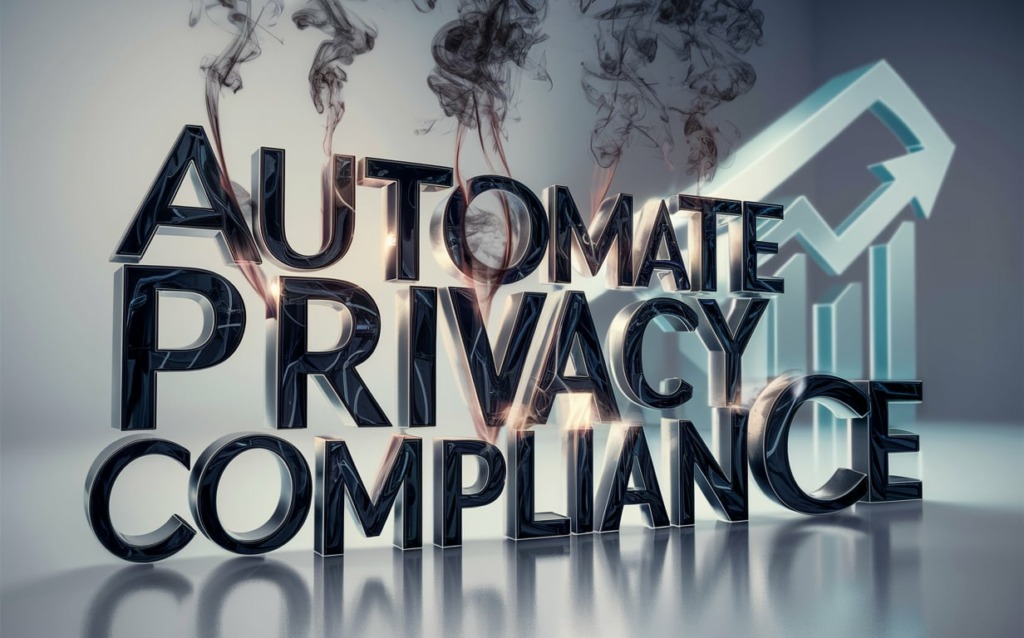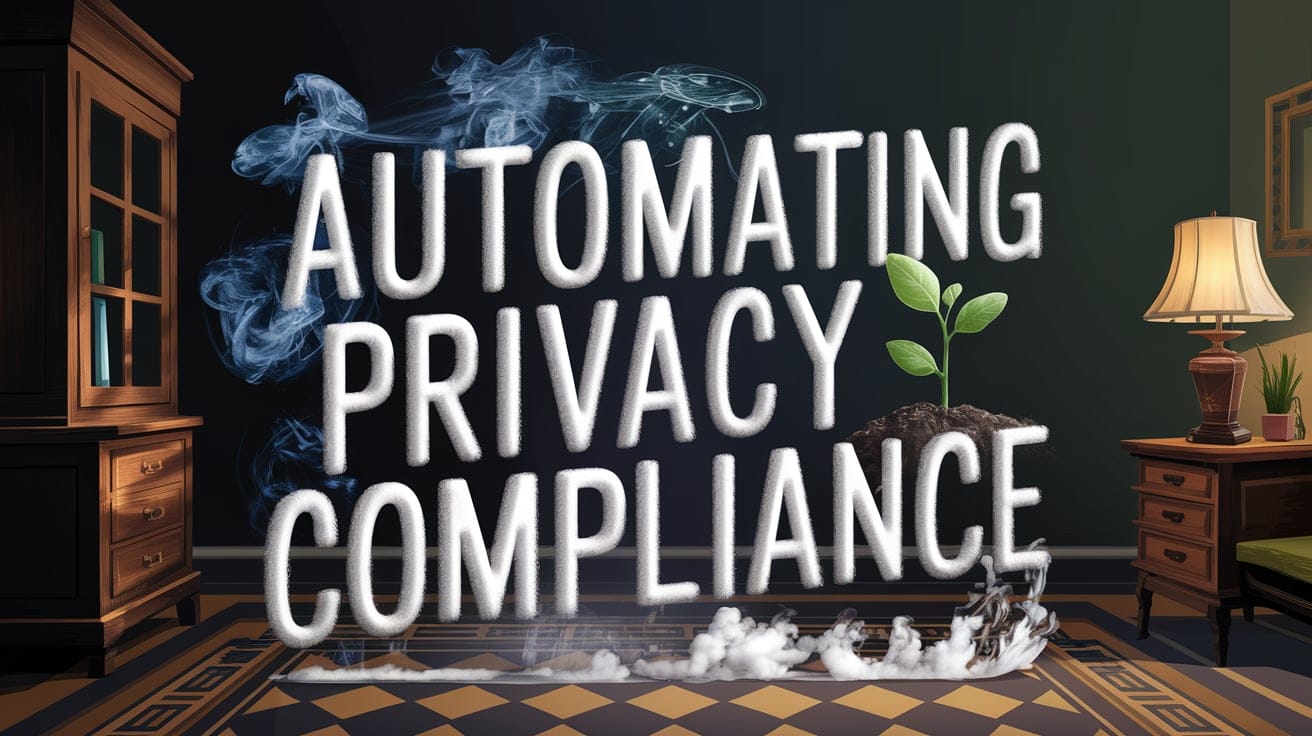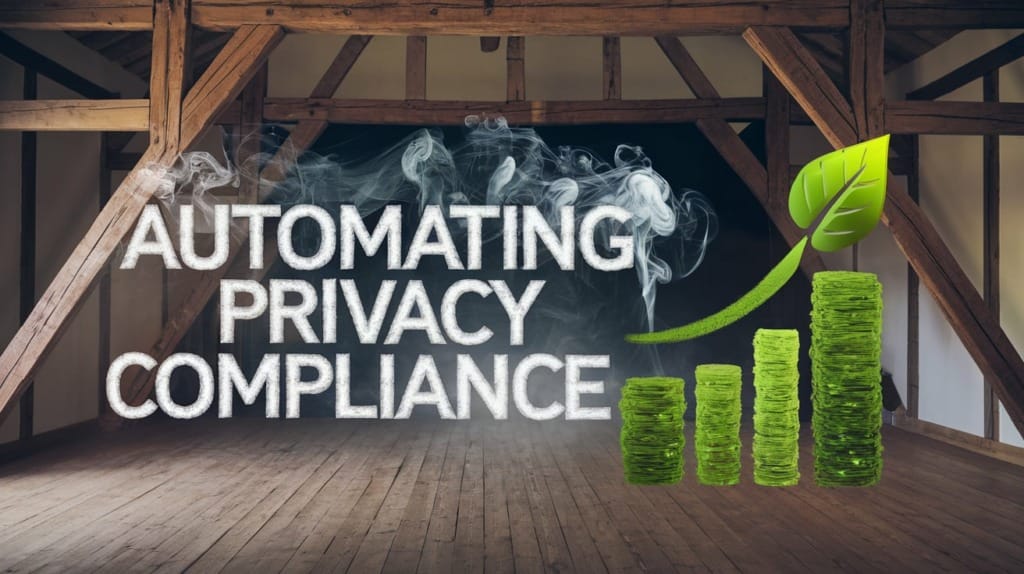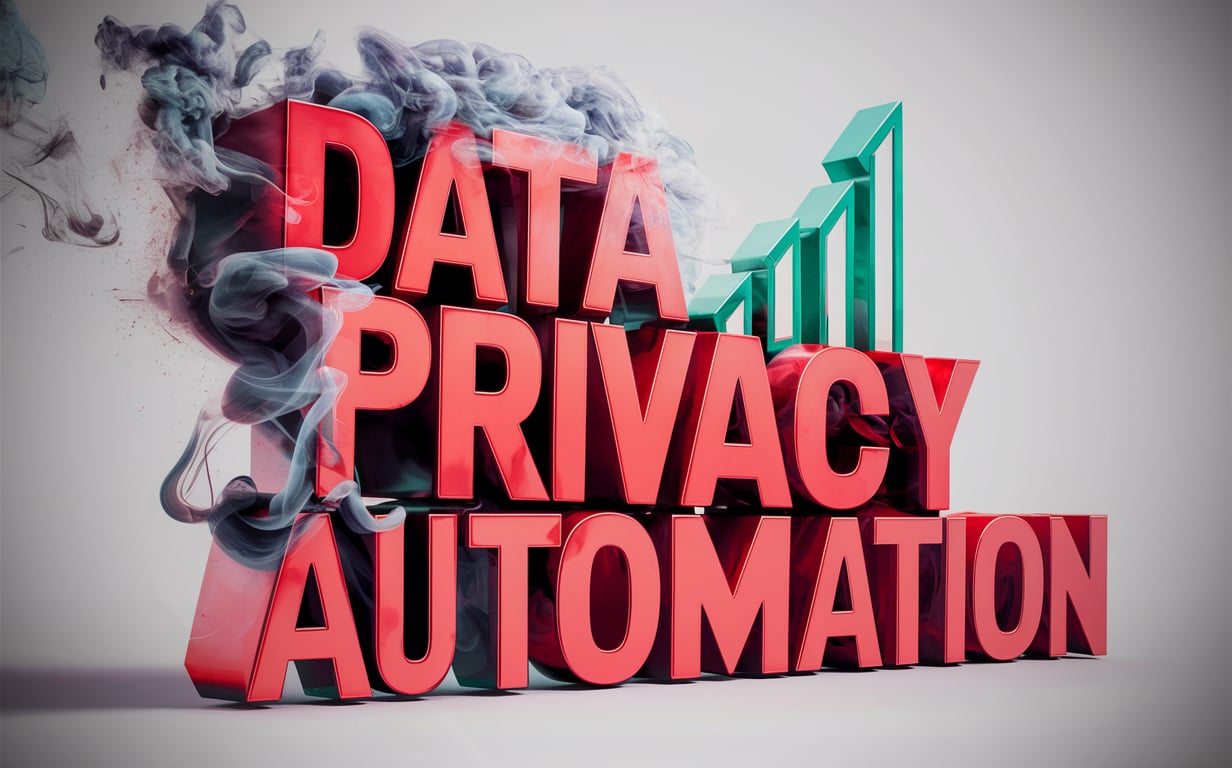Sleepwalking into a compliance crisis? Without automation, managing privacy risks in the digital era is nearly impossible.
Spreadsheets and checklists simply cannot provide the visibility, control, and intelligence needed to operationalize compliance with modern data privacy regulations. The stakes have also never been higher, with fines for non-compliance running into millions of dollars.
To avoid data chaos and mitigate risks, automation has become foundational to privacy programs. Leading organizations recognize this and are prioritizing investments in automation to future-proof regulatory compliance, unlock the power of data responsibly, and make privacy a competitive advantage rather than just an obligation.
This article explores the drivers and benefits of intelligent data privacy automation across areas including:
- Core technical capabilities required
- Best practices for successful implementation
- Use cases delivering high business value
- Future evolutionary path of privacy management
Let’s get started unraveling how automation can transform privacy in the digital era.
Why Automation is Critical for Managing Data Privacy
Today, every organization faces a data deluge like never before. The volume, variety, and velocity of data generation has exploded exponentially. Consider some of these mind-boggling stats:
- 2.5 quintillion bytes of data are produced every single day (that’s 18 zeros!)
- Unstructured data like photos, videos, and social media posts make up over 80% of all data today
- The average organization sees a 50% year-over-year growth in data volume
This data flood shows no signs of slowing down either. Emerging technologies like IoT sensors, AI systems, and 5G networks will drive even more data creation in the coming years.
Sadly, privacy management has remained stubbornly manual. Most organizations still use outdated tools like spreadsheets, documents, and survey questionnaires to understand their data. These are scattered across siloed teams and not integrated into IT systems.
Such fragmented and manual approaches simply cannot scale anymore. With global regulations like GDPR and CCPA mandating operationalization of privacy, old-school methods are a compliance time-bomb waiting to explode!
Consider a data subject rights request under GDPR. Organizations have just 1 month to comprehensively respond after receiving one. But if you don’t have automated data discovery and mapping, how would you even know where to find the data? Spreadsheets surely can’t help you locate and redact data spread across cloud apps, databases, and more within just 30 days!
The stakes are higher than ever too. Non-compliance penalties run in the millions of dollars. British Airways was fined a record $230 million for a data breach. Marriott International paid over $123 million for GDPR violations. With regulators only getting stricter, companies can’t afford the risks of manual privacy processes anymore.
Let’s discuss some specific reasons why automation is now truly mission-critical for privacy compliance:
1. Creating an Accurate, Real-Time Data Inventory
The foundation of any privacy program is a data map or inventory of personal data flows across your systems. But with siloed teams and hybrid IT, getting a single unified view is incredibly challenging.
Automated data discovery platforms continuously scan your entire infrastructure to create a central data catalogue. Critical capabilities you want include:
- Identifying personal data across structured, unstructured, and semi-structured sources
- Applying regulatory and business context using advanced classification algorithms
- Maintaining with scheduled incremental scans to keep the inventory accurate and up-to-date
This allows building visual data lineage maps showing exactly where personal data resides and moves within your systems. Such comprehensive visibility ensures your privacy and security teams can manage compliance risks proactively.
2. Streamlining Data Subject Rights Fulfillment
Regulations like the GDPR and CCPA give users strong rights over their data. This includes the right to access (DSAR), right to delete (erasure requests), and more.
But responding to these requests manually takes up ridiculous amounts of time and effort. Just documenting how you fulfilled a DSAR can require 50+ hours!
Automation again comes to the rescue here. Leading privacy platforms have end-to-end workflows to intake requests, auto-redact sensitive data, and accelerate compliant responses.
Advanced automation also reduces the burden of evidence collection and documentation for regulators. Having audit trails and reports showing how you fulfilled obligations at the push of a button is invaluable.
3. Codifying and Enforcing Privacy Policies
Simply defining privacy policies in documents is not enough. You have to be able to implement the controls outlined in those policies across your systems.
This involves challenges like restricting unauthorized data access, limiting retention periods, and ensuring processing aligns with consent. Doing all this manually sucks up ridiculous effort.
Automated policy engines solve this by letting you create unified policies across your IT stack. You can apply centralized rules and restrictions instantly no matter where data resides.
As requirements change, you can also roll out policy updates easily across all your infrastructure. This ensures governance keeps pace with regulations and business needs.
4. Continuous Compliance Monitoring and Auditing
In today’s dynamic data environments, compliance cannot be a checklist you tick off. It requires ongoing monitoring and evidence collection to prove obligations are being met.
Collating audit reports manually means compliance teams always have their hands full. Automation takes this burden off by generating the necessary trail for regulators automatically.
Leading platforms offer auto-generated artifacts like Data Protection Impact Assessments, data inventories, policy reports, and more. This reduces audit prep time significantly while also minimizing compliance risk.
The Bottom Line
In essence, privacy automation brings your management capabilities to the level required in the digital age. Teams can now keep up with the pace of data growth and regulation changes.
Without automation, compliance becomes an exponentially harder battle as data volumes grow. But automated platforms give you the visibility, scale, and control needed to future-proof privacy management.
The stakes couldn’t be higher either. Fines now run in the millions of dollars and regulators will only get stricter. But with the right automation, you can turn privacy from a risk into a competitive advantage that builds customer trust. The choice is clear – evolve or get disrupted.

Core Pillars of Automated Privacy Compliance
Building an automated privacy management program involves capabilities across four key pillars:
- Centralized Data Discovery & Classification
- Data Mapping for Visualizations
- DSAR Response Process Automation
- Policy Codification & Enforcement
Let’s look at each of these pillars in more detail:
1. Centralized Data Discovery & Classification
The starting point for automation is getting full visibility into your data landscape. Data discovery tools crawl through all your systems to create a centralized inventory of personal data.
Look for platforms that offer:
Comprehensive Coverage
- Scan structured (databases, CRM etc.), unstructured (documents, messaging systems etc.), and semi-structured (logs, XML etc.) data sources.
- Include both on-premise and cloud-based systems like SaaS apps.
- Connectors to minimize manual integration effort.
AI-Based Classification
- Apply regulatory (HIPAA, GDPR etc.) and business context to discovered data.
- Classify using advanced machine learning algorithms.
- Assign categories like personal, sensitive, financial, health etc.
Maintenance with Incremental Scans
- Schedule recurrent scans to detect new data added over time.
- Limit unnecessary rescanning of unchanged data to optimize processing.
- Keep the inventory accurate as data flows evolve.
This gives you a constantly updated 360-degree view of your data landscape, marking the first step to operationalizing privacy.
2. Data Mapping for Visualizations
The next capability needed is creating visual data maps from the centralized inventory. These provide intuitive lineage diagrams of how personal data flows through your systems.
You want data mapping solutions that enable:
End-to-End Data Lineage
- Illustrate the full lifecycle of data including collection, storage, transfers, processing, archival etc.
Interactive Exploration
- Click into any component of maps for more granular details.
- Understand interconnections across teams, systems, and geographies.
Gap Analysis
- Easily identify missing security controls and compliance risks.
- Assess conformance to data localization mandates.
- Prioritize issues based on potential impact.
Such intuitive data maps arm privacy and security teams with actionable insights to enhance governance and close data exposure gaps.
3. DSAR Response Process Automation
With the GDPR and CCPA establishing strong data rights, organizations have to streamline responding to user requests like access and deletion.
Automating this process from intake to fulfillment is key with capabilities for:
Intuitive Request Portals
- Customizable online intake forms for different request types.
- Conversational chatbots to handle common user queries.
End-to-End Workflows
- Built-in workflows covering identity verification, data lookup, redaction etc.
- Collaboration across teams for rapid parallel processing.
Audit Trails & Documentation
- Auto-generate evidence like redaction logs and response letters.
- Maintain detailed audit trails for regulator submission.
Such automation ensures you can respond accurately and transparently to growing user requests at scale.
4. Policy Codification & Enforcement
The real proof of privacy automation comes from enforcing data policies in real-time. This requires:
Unified Policy Authoring
- Create centralized policies encompassing data access, retention, consent etc.
- Align controls to both internal governance and external regulations.
Instantaneous Propagation
- Propagate policies across all data systems irrespective of where they reside.
- Apply controls consistently without manual configuration.
Continuous Compliance Auditing
- Detect policy violations and unauthorized data usage.
- Get notified of non-compliant access in real-time.
- Maintain always-on audit trails for regulators.
Automated policy engines thus act as the command center to implement your privacy program decisively across the entire data infrastructure.
In Summary
Together, these four automation pillars provide end-to-end visibility, control, and governance across the data lifecycle. They empower privacy teams to manage compliance risks proactively even as data volumes multiply exponentially.
Instead of playing catch-up, you can get ahead of regulations and build trust. The automation capabilities covered here form the core components of any scalable privacy program today.

Critical Capabilities of Data Privacy Automation Platforms
While shopping for a data privacy automation solution, you want to evaluate some key capabilities that maximize flexibility and minimize disruption to existing processes:
1. Flexible Workflows & Interoperability
Look for platforms that allow configuring workflows to match your organizational structure and preferred processes. Key aspects include:
Modular and Customizable
- Build workflows combining different steps like data discovery, redaction, approvals etc.
- Reuse common components across multiple workflows.
- Customize the sequence, assignments, and rules as needed.
Integration Friendly
- Invoke workflows from portals, service desk tools, or mobile apps via APIs.
- Integrate notifications into communication systems like email and chat.
- Connect to your identity provider (IdP) for access management.
Easy Collaboration
- Add different teams like legal, IT, HR etc. into workflows for parallel processing.
- Assign steps based on roles and responsibilities.
- Maintain full visibility on task status across teams.
Such workflow flexibility ensures the automation platform augments your processes instead of disrupting them.
2. Unified View Across Hybrid Infrastructure
Today’s data landscape spans cloud applications, on-premise databases, virtual machines, file shares, and more. The privacy automation solution should cover:
Multi-Cloud Support
- Discover and apply controls across leading public clouds – AWS, Azure, Google Cloud etc.
- Maintain consistent governance across cloud and on-premise systems.
Broad Connector Coverage
- Prebuilt connectors to popular apps, data stores, and infrastructure.
- Minimize need for custom integration.
- Onboard new data sources rapidly as you migrate to cloud.
Agnostic Data Classification
- Classify data using consistent logic irrespective of where it resides.
- Eliminate gaps that can arise from incompatible taxonomies.
- Simplify policy definition and enforcement.
Such unified visibility and control is key to managing privacy seamlessly across fragmented technology landscapes.
3. Granular Policy Administration and Controls
Sophisticated policy engines enable implementing nuanced controls aligned to regulations and data sensitivity levels:
Attribute-Based Policies
- Define policies using attributes like user department, data classification etc.
- Achieve precise access alignment without complex rule logic.
Hierarchical Policy Administration
- Cascade policies from organization level to individual systems.
- Override specific policies at system level as needed.
- Reduce administrative overheads through inheritance.
Contextual Access Controls
- Enforce controls dynamically based on contextual attributes like user, data, device etc.
- Restrict actions based on geolocation, time of day, IP address patterns etc.
Real-Time Monitoring and Alerting
- Detect policy violations and anomalous access in real-time.
- Get alerted on high-risk events like unauthorized data exfiltration.
- Blacklist users engaged in repeated non-compliant actions.
Such advanced policy engines provide privacy teams the flexibility needed to enforce controls creatively based on context.
4. Automated Reporting and Documentation
Manual documentation efforts are slow, expensive, and error-prone. Look for platforms that offer:
Auto-Generated Audit Trails
- Capture detailed activity trails required for forensic investigations automatically.
- Accelerate incident response by quickly retracing steps.
On-Demand Compliance Reports
- Generate artifacts like data inventories, risk assessments, audit summaries on demand.
- Reduce time spent on prepping for audits and regulators.
Customizable Dashboards
- Build customized views with key privacy KPIs like policy coverage, access risks etc.
- Configure thresholds and alerts on metrics critical for governance.
Notification Integrations
- Push reports, alerts, and notifications into communication tools.
- Maintain audit trails outside the system-of-record as needed.
With such extensive automation support, compliance and audit prep becomes far less burdensome for privacy teams.

Best Practices for Implementation & Adoption
Getting the full value from privacy automation requires following some key best practices around strategy, planning, and change management:
1. Executive Buy-In and Alignment
Any successful automation program begins with securing executive sponsorship early on. You want to:
Pitch Strategic Business Benefits
- Emphasize benefits beyond just compliance like data monetization, minimized risk, customer trust.
- Tie automation to larger digital transformation and data governance initiatives.
Create Cross-Functional Teams
- Involve key stakeholders from IT, security, legal, business units from the start.
- Assign clear owners accountable for program success across functions.
Sustain Focus on Adoption
- Maintain continuous advocacy and communication from leadership.
- Encourage data-driven decision making based on platform analytics.
- Celebrate wins and milestones to build momentum.
Getting all key players bought into the vision and value propels successful adoption long-term.
2. Phased Rollouts Tied to Regulation Timelines
The best automation programs align their roadmap to major regulatory milestones like:
Prioritize by Risk
- Sequence rollout across highest risk data and processes first.
- Quantify risk levels based on factors like sensitivity, lack of existing controls etc.
Sync with Major Regulatory Drivers
- Plan initial capabilities around major deadline like GDPR, CCPA etc. in your jurisdiction.
- Maintain momentum by anticipating upcoming regulations.
Focus on Quick Wins
- Target high value use cases with shortest time to demonstrate value.
- Early successes build credibility and enthusiasm for further initiatives.
This pragmatic approach helps focus energy on initiatives that maximize compliance and minimize risk.
3. Platform Selection Based on Current & Future Needs
The foundation for scalable automation is picking the right software platform. Look for:
Configurability Over Customization
- Prioritize platforms that meet 80% of needs out-of-the-box over highly customized ones.
- Ensure support for your current landscape and processes.
Cloud-Native Architecture
- Evaluate only cloud-native SaaS platforms that keep pace with innovation.
- Avoid on-premise software requiring ongoing maintenance.
Roadmap Aligned to Privacy Evolution
- Assess vendor vision for adding new capabilities like ethical AI, supply chain privacy etc.
- Build in support for future regulations and use cases.
Choosing the right platform ensures your privacy program can evolve smoothly over time.
4. User Enablement and Training
Any automation journey needs strong change management and training:
Hands-On Sandbox Testing
- Provide access to sandbox environments to play with workflows.
- Encourage experimentation to identify gaps and build familiarity.
Contextualized Training
- Offer role-based training focused on day-to-day usage.
- Blend instructional and hands-on learning.
Reinforce with Internal Evangelists
- Identify power users across teams to provide peer assistance.
- Create a community to share best practices and inspire others.
The ROI of Data Privacy Automation
Beyond just achieving compliance, privacy automation delivers immense strategic value through:
1. Cost Savings from Process Efficiencies
Manual privacy processes require significant investments in human effort and expense. Automating these workflows substantially reduces costs:
- Data discovery and classification tools lower the overhead of creating and maintaining accurate data inventories from weeks to just days.
- Automated DSAR request fulfillment slashes the average 50+ hours spent on processing a single request down to just a few hours by auto-generating response documentation.
- Policy engines eliminate the need for fire-drill spikes whenever regulations change by allowing instant rollout of updated controls across systems.
- Compliance reporting automation reduces hundreds of hours spent on audit preparation by automatically generating required artifacts on demand.
According to leading industry estimates, automation typically yields over 50% in cost savings by eliminating repetitive manual efforts and rework.
2. Risk Reduction Through Proactive Governance
Automation transforms privacy from reactive to proactive by enabling continuous real-time monitoring, analysis, and control:
- Data discovery reveals “shadow IT” systems holding personal data that pose unseen risks due to lack of controls. Remediating these closes security gaps.
- Automated policy authoring and propagation reduces audit findings by ensuring controls are applied comprehensively across all data.
- Instant alerts on access policy violations enable intervening before a breach occurs rather than after data is compromised.
- Ongoing risk analysis powered by data intelligence highlights areas needing tighter controls based on factors like sensitivity and user behaviors.
Such proactive privacy management significantly reduces regulatory, reputation, and financial risks for the organization.
3. Faster Innovation Enabled by Trusted Data Use
Automation unlocks trusted use of data to power business innovation.
- Full visibility into what personal data exists facilitates identifying monetization opportunities safely.
- Sustainable consent and preference management foster richer customer experiences powered by opted-in data.
- Embedding privacy earlier in product lifecycles via initiatives like privacy-by-design reduces time-to-market for offerings leveraging personal data.
- Automated risk analysis provides guardrails for safely testing innovations like AI using actual customer data vs. just synthetic data.
By enabling responsible data use, automation ultimately becomes a competitive differentiator.

Future Outlook – Next Frontier of Privacy Management
While automation delivers immense value today, data privacy needs continue to evolve rapidly. Some key frontiers organizations are prioritizing next include:
1. Embedding Privacy Earlier into Data Lifecycles
Leading privacy teams now seek to embed controls much earlier in data lifecycles – at the point of creation itself. Key focus areas are:
Automated Metadata-Driven Policies
- Associate policies to data by encoding rules within metadata tags that persist throughout its lifecycle.
- Embed privacy controls at data’s birth rather than retrofitting them later.
Auto-Discovery of New Data Assets
- Identify and classify any new datasets, data streams etc. as soon as they are provisioned.
- Eliminate blindspots by applying controls before large volumes accumulate.
Scalable Consent Lifecycle Management
- Automate obtaining, managing, and honoring data usage consent specific to each customer.
- Build trust by involving consumers directly in governance.
This shift from privacy by compliance to privacy by design minimizes risks while also enhancing customer experiences.
2. Tighter Integration with Security and IT
Collaboration between privacy, security, and IT teams is growing in importance with initiatives like:
Unified Data Access Governance
- Take a common approach to regulating access across privacy and security functions.
- Eliminate inconsistencies from disjointed policies and controls.
Coordinate Incident Response
- Share threat intelligence, forensic artifacts, and mitigate remediation actions.
- Accelerate joint response by bridging organizational siloes.
Privacy-Aware IT Lifecycle Processes
- Incorporate privacy requirements like data minimization and retention into IT processes like application development, infrastructure management etc.
- Make privacy everyone’s responsibility across the technology organization.
Breaking down historical walls between functions better integrates privacy into overall data governance.
3. Monitoring and Controlling External Ecosystems
Regulations increasingly look to hold organizations responsible for data shared externally too:
Automated Third-Party Due Diligence
- Continuously monitor partners and vendors for emerging cyber risks and compliance gaps.
- Ensure accountability across the supply chain.
Contracts/Terms Encoding Privacy Requirements
- Codify permissions, restrictions, and controls in data sharing agreements, SLAs etc.
- Enforce policies programmatically based on integration with external systems.
Selective Data Minimization and Masking
- Automatically redact or mask sensitive elements before sharing data externally.
- Release only the minimum data required for the specified purpose.
Extending privacy governance beyond the walls of the organization becomes critical in the interconnected digital economy.
4. From Compliance to Competitive Differentiation
Ultimately, leading privacy teams seek to move from a check-the-box mindset to one that sees privacy as a competitive differentiator by:
Building Trust and Loyalty
- Provide transparent access, controls, and value in exchange for data.
- Use consent lifecycle automation to give consumers visibility into how data is used.
Enabling Confident Data Monetization
- Realize untapped value from first-party data through purposeful innovation.
- Provide assurances to consumers, regulators, and partners.
More Intelligent Risk Management
- Leverage data intelligence for continuous privacy risk analysis.
- Take measured risks confidently based on advanced controls.
This shift makes privacy a revenue driver and sustains investment.

Key Takeaways
- The volume, variety and velocity of data generation has exploded exponentially, making manual privacy processes inadequate.
- Key regulations like GDPR and CCPA mandate operationalizing privacy, with big fines for non-compliance. This necessitates automation.
- Core pillars of privacy automation include centralized data discovery, intuitive data mapping, DSAR workflow automation and policy codification.
- Critical software capabilities to evaluate include flexibility, hybrid infrastructure coverage, granular policy controls and automated reporting.
- Best practices for implementation involve securing executive commitment, pragmatic roadmaps, flexible software and extensive training.
- The ROI for automation is immense – from cost savings to risk reduction to faster innovation from trusted data use.
- The future of privacy management will focus on earlier lifecycle embedding, ecosystem governance and moving from compliance to competitive differentiation.
- By providing unprecedented visibility, control and intelligence, privacy automation has become foundational to managing compliance amidst data complexity.
- The time to start your automation journey is now. Build your data privacy program on the power of intelligent software, not manual efforts.
Frequently Asked Questions
Q: What are some examples of processes that can be automated for privacy compliance?
A: Key processes that can be automated include data discovery, data mapping, DSAR intake and fulfillment, consent/preference management, policy definition and enforcement, risk analysis, audit reporting etc.
Q: How long does it take to implement privacy automation software?
A: Implementation timelines vary based on scope and integration requirements. However, leading privacy platforms can be up and running in just weeks with prebuilt connectors and configurations for rapid time-to-value.
Q: Does automation software need extensive custom coding?
A: The best platforms provide intuitive no-code interfaces for automating workflows, policies, reporting etc. This minimizes need for custom coding. Prioritize configurable software with prebuilt components over customized solutions.
Q: Can automation scale across complex hybrid environments?
A: Yes, leading privacy automation platforms provide unified visibility and control across on-premise systems, cloud applications, virtual infrastructure, containers etc. Look for broad connector support.
Q: How can automation help meet global privacy regulations?
A: Automation provides consistent enforcement of controls aligned to global regulations like GDPR, CCPA etc. It also streamlines obligations like DSARs across geographies using standardized workflows.
Q: Does automation require disrupting existing privacy processes?
A: Configurable automation software augments existing processes via flexible workflows, integration, and collaborative features. This avoids disrupting current teams and ways of working.
Q: How can success with privacy automation be measured?
A: Key metrics to track include risk posture improvements, audit performance, cost reductions, cycle time improvements, usage across teams, and quantifying the value of data unlocked for innovation.
Q: What risks does automating introduce?
A: Risks include poor software usability leading to lack of adoption, complex custom implementations, lack of executive sponsorship, and poor change management. Mitigate via the best practices outlined earlier.

